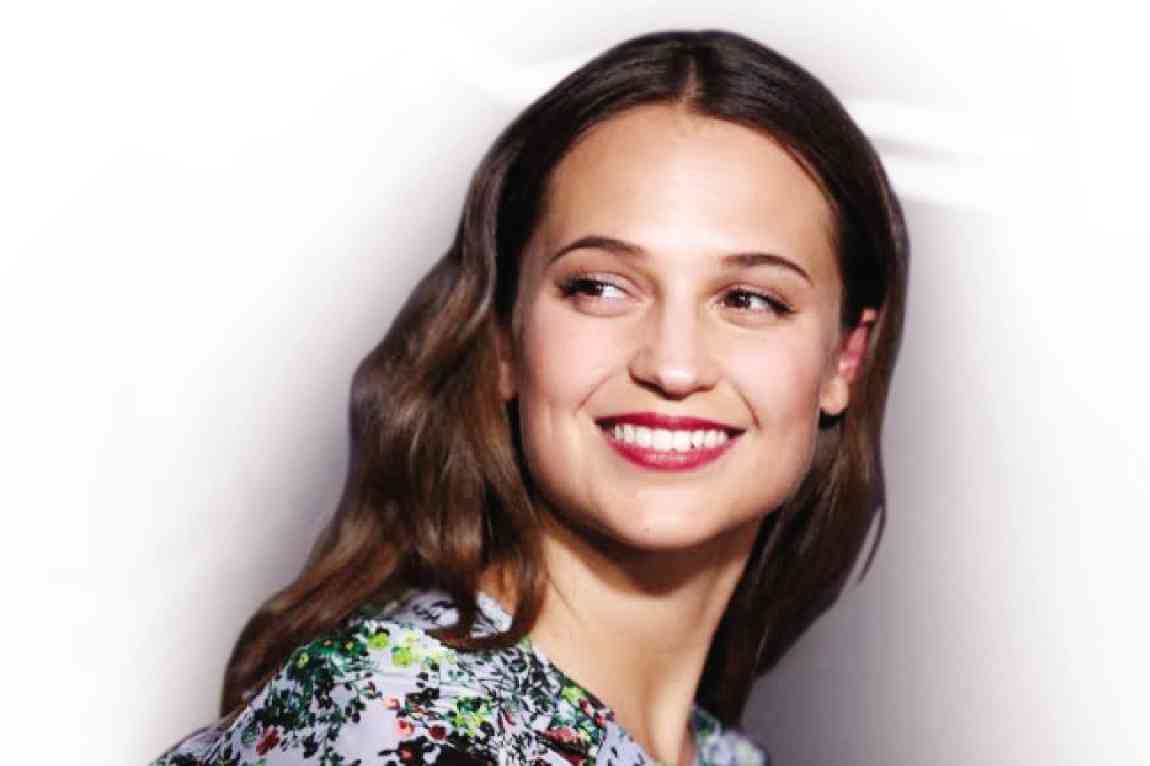SEOUL—“She’s quite lethal,” Alicia Vikander said of her character Heather Lee, the ambitious CIA operative who finally tracks down Robert Ludlum’s former CIA agent and assassin in Paul Greengrass’ “Jason Bourne,” many years after the elusive amnesiac was seen jumping into the freezing East River estuary in New York and vanishing into thin air at the end of 2007’s “The Bourne Ultimatum.”
But we know only too well that you can’t force Jason Bourne, aka David Webb, to reemerge from the shadows of his lonely rat hole in Macedonia—where the deadly sleuth’s story resumes—without a compelling reason or a worthy “nemesis.”
Forget Alicia’s damsel-in-distress-like feminine features: They’re as much her strength as her weapon—a perception of deep vulnerability that has brought her acclaim in movies like “Anna Karenina,” “Testament of Youth” and “Ex-Machina,”—and this year’s Oscar best supporting actress prize, for her indelible portrayal in “The Danish Girl.”
“[She may not be seen in as many action scenes as Jason,] but I don’t think she grew up with an interest in fighting. She fights only when she needs to defend herself,” she told the Inquirer during “Jason Bourne’s” recent promotional tour in South Korea.
For the 27-year-old Swedish actress, perception can be deceiving: “Heather is quite a strong weapon herself, even if she doesn’t figure in [a lot of] action scenes. She’s been doing hardcore decisions that reflect [strength of character]. When we talk about warfare, it isn’t just about combat—sometimes, you can sit behind a computer and press a button…”
Our Q&A with Alicia:
Director Paul Greengrass is known for documentary-style filmmaking, where blocking isn’t rigid. You walk where you want to walk, and talk when you want to talk—he just follows his actors around. How did you adjust to that?
It helped that we were guided by a basic idea for blocking, although I think this is quite common these days.
Paul needs the scenes to feel real—and if the blocking doesn’t work, we scrap it and do something else. It’s always good to follow something basic, then you can play around with it.
“The Man from U.N.C.L.E.” and “Jason Bourne” are action movies. How different are Gaby and Heather—your respective characters in them—from each other?
Gaby is extremely outspoken and tomboyish, while Heather is the opposite—she’s extremely driven and determined, probably because she’s focused on her “mission” in life. She cages herself in.
Both characters have the same range of emotions, but Heather keeps them inside a lot more.
English is your second language. Does this make acting easier or more difficult?
It’s always an advantage to speak your mother tongue. But for every acting job that I do in English, it gets easier each time—because the filter between my thoughts and the language I speak operates faster if I do it with regularity.
It was tough when I did “Anna Karenina” four or five years ago. I had to pour in more hours [to work on characterization], especially in emotional scenes that involved extreme happiness, sadness or anger—because my fastest and most instinctive reactions were in Swedish.
My English wasn’t as good as it is now. But one and half years ago, I started to feel more comfortable [with English dialogue]. On the other hand, a new accent or language helps me move farther away from who I am—which is what an actress wants if she’s creating a new character. I go to the set and turn on an accent—it’s like muscle memory. So, it gets better with time.
What type of roles do you prefer?
All the characters that I was excited to do I never imagined I could do before I did them (laughs). [I like a good challenge], but these days, a good idea has a lot to do with the visionary filmmaker who makes it work.
Sometimes, what matters is how he treats a story, and how the public responds to it. A role is fun to do if it feels different from anything you’ve done before.
Do you have to like the characters you portray?
It would be very difficult to like all of them (laughs). But, more than liking them, it’s more important to understand them. Some of the greatest celluloid villains are memorable because there’s something about them that people relate to.
Even if my character does something morally reprehensible or something I’m very much against, I need to understand it. [That way,] I’ll learn more about my own emotions and use them to create a character.
Are you active in social media?
No, but I did use Facebook early on. Then, I used it less and less—so, I just thought of not using it anymore. I was also on Instagram the first time it came out, and I had only three or four friends. But I didn’t like it because it made me feel like I had to always post something.
On the other hand, FaceTime is probably the world’s best invention. I use it because I travel a lot. It allows me to “hang out” with friends and family. If you enjoy using [social networking sites], that’s all right, because it’s a way of reaching out to fans or doing interviews.
Your character in “Jason Bourne” always keeps viewers in the dark—it’s hard to know if she’s good or bad…
I’ve had a lot of chats with Paul about this… because I also wanted to know (laughs). But, I guess figuring out a character’s [true intention] is part of the joy [and thrill] of watching the movie.
People leave the theater with different ideas about Heather. Her ambiguity makes her intriguing—and that’s a good thing. And I’m not going to tell you anything more than that (laughs).
